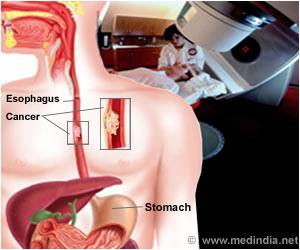Engaging in regular exercise could significantly enhance the quality of life for individuals facing metastatic breast cancer.

Effects of Exercise in Patients With Metastatic Breast Cancer (EFFECT)
Go to source) Breast cancer and its treatments can cause side effects, such as fatigue, nausea, pain, and shortness of breath, which can decrease a patient’s health-related quality of life (HR-QoL). For patients with metastatic disease, optimizing the ability to function is crucial, explained study presenter Anne May, PhD, a professor at the Julius Center for Health Sciences and Primary Care at the University Medical Center, Utrecht, in the Netherlands.
Enhancing Quality of Life Vital for Breast Cancer Patients
“Optimizing quality of life is, of course, important for everybody, but especially for patients living with metastatic disease who undergo continuous treatment,” May said. “By improving quality of life through enhanced symptom management, we can help patients better enjoy their personal, social, and, if applicable, working life.”‘Experts recommended integrating supervised exercise into standard recommendations for metastatic breast cancer patients. #exercise #breastcancer #womencancer #physicalactivity ’





Researchers have previously assessed the effects of exercise programs on patients with less advanced cancer, finding them to benefit patients’ HR-QoL and energy levels. However, whether these benefits also apply to patients with metastatic disease has not been rigorously tested, May said. She added that a longer exercise program may be necessary for patients with metastatic disease because their treatment usually continues for much longer periods. May and her colleagues enrolled 357 patients with metastatic breast cancer to the PREFERABLE-EFFECT trial, a collaboration between institutions in Germany, Poland, Spain, Sweden, the Netherlands, and Australia. All participants in the trial received a physical activity tracker and generic exercise advice; 178 patients were randomly assigned to twice-weekly supervised exercise sessions for nine months, involving balance, resistance, and aerobic exercises (one weekly session could be performed instead via an exercise app during the final three months).
At enrollment and after three, six, and nine months, the participants were surveyed using the European Organisation for Research and Treatment of Cancer Quality of Life Questionnaire (EORTC-QLQ-30), a comprehensive questionnaire assessing patients’ physical, mental, emotional, and financial quality of life. Additionally, the EORTC-FA12 questionnaire was used to assess multidimensional fatigue among the participants. Each questionnaire was scored from 0 to 100, with higher scores on the EORTC-QLQ-30 indicating improved HR-QoL and higher scores on the EORTC-FA12 indicating higher levels of fatigue. Researchers also tested physical fitness using the steep ramp test, in which participants were asked to ride a stationary bike at increasing resistance levels until voluntary exhaustion.
At three, six, and nine months, respectively, patients assigned to the exercise intervention had average HR-QoL scores that were 3.9, 4.8, and 4.2 points higher than patients in the control arm. Patients who participated in the exercise intervention had EORTC-FA12 scores that were 3.4, 5.3, and 5.6 points lower (indicating decreased fatigue) at three, six, and nine months, respectively, compared with those of the patients in the control arm. All differences were statistically significant.
At six months, patients assigned to the exercise intervention also reported significantly better scores on important EORTC-QLQ-30 subscales, compared with those in the control arm, including a 5.5-point increase in social functioning, a 7.1-point decrease in pain, and a 7.6-point decrease in shortness of breath. In the steep ramp test, patients in the exercise arm reached an average maximum resistance that was 24.3 Watts (13%) higher than those in the control arm.
Advertisement
Limitations of this study include the inability to blind participants to their respective research arms, which may have motivated patients in the control arm to voluntarily increase their physical activity levels. May noted that this may have led to an underestimation of the intervention’s effect.
- Effects of Exercise in Patients With Metastatic Breast Cancer (EFFECT) - (https://clinicaltrials.gov/study/NCT04120298)















